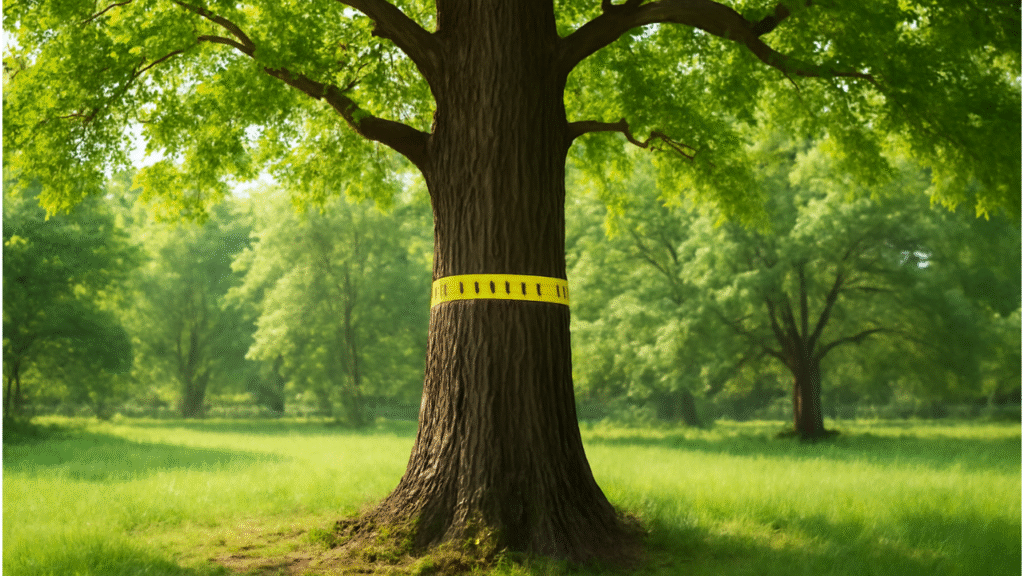
How to Determine the Value of Black Walnut Tree: A Complete Guide for Property Owners and Tree Enthusiasts
Have you ever wondered what your black walnut tree is truly worth? 🌳 Whether you’re a property owner looking to profit from your land or simply a tree enthusiast curious about the value of your black walnut, knowing how to determine its worth can be a game changer. The value of black walnut trees is not only determined by the size and age of the tree but also by factors like the quality of the wood, its health, and even market demand. But how do you know where to start?
In this guide, we’ll break down the key elements that impact the value of your black walnut tree and provide you with easy, actionable steps to assess it. From measuring your tree to understanding how to sell it for maximum profit, we’ve got you covered. Whether you want to harvest your tree for timber or simply want to know its value, this complete guide will give you the tools and knowledge to make an informed decision.
So, let’s dive in and discover how to unlock the true value of your black walnut tree!
Table of Contents
Toggle🪵 Factors Affecting the Value of Black Walnut Trees 🪵
When it comes to determining the value of black walnut trees, there are several key factors that come into play. By understanding these factors, you can get a much clearer idea of how much your tree might be worth. Let’s break it down in simple terms! 😊

🌳 1. Age and Size of the Tree 🌳
The first thing buyers look at is the age and size of your black walnut tree. These two elements have the most direct impact on value. 📏
- Older trees (typically 40-80 years old) tend to be more valuable due to their thicker trunks, which produce more timber. 🌳
- Diameter matters! The larger the trunk, the more valuable the tree is. A tree with a diameter of 18 inches or more is generally considered valuable. 📏
- Height also plays a role. Taller trees usually have more usable timber, increasing their value. 🌲
If your tree has been around for a while and is of a decent size, you’re on the right track! 🌱
🌲 2. Quality of the Wood 🌲
Not all wood is created equal! The quality of the wood plays a big role in how much your black walnut tree is worth. Here’s what matters: 🔨
- Straight trunks with few branches are ideal. Knots or twists can lower the price. 🪚
- Color is important—dark, uniform wood without imperfections fetches a higher price. 🌑
- Defects, such as disease or damage, can greatly reduce the value. Healthy, defect-free wood is always more desirable. 🌿
If your tree is healthy and straight, you’re likely looking at a better payout! 🪵✨
🏡 3. Location and Market Demand 🏡
Where your tree is located can significantly affect its value. Here’s why: 🌍
- Proximity to mills: If your tree is near a lumber mill or a market with high demand for walnut wood, you might get more for it. 🏭
- Regional demand: The value of black walnut wood can fluctuate depending on where you live. In areas where walnut trees are less common, the demand might be higher. 📊
So, if you’re in a region where walnut trees are prized, you’re in a good position to make a profitable sale! 🌍
🍂 4. Health of the Tree 🍂
Healthy trees are worth much more than sickly ones. Buyers will always inspect the health of your tree before making an offer. Here’s what you need to watch for: 👀
- Signs of pests or disease can lower the tree’s value. These can cause defects in the wood, reducing its quality. 🐛
- Signs of damage, like broken branches or rot, also affect the price. 🌳
If your tree looks healthy with no obvious signs of damage, it’s likely to fetch a higher price! 🍃
🌟 Summary of Key Points 🌟
The value of a black walnut tree depends on factors like its age, size, wood quality, location, and overall health. To get the most accurate valuation, you need to consider all these factors. By focusing on these areas, you can ensure your tree is in the best condition for sale and maximize its value! 🌳💰
📏 How to Measure and Assess Your Black Walnut Tree 📏
Now that you understand the key factors that affect the value of black walnut trees, it’s time to get hands-on and assess your tree. Measuring and evaluating your black walnut tree is simple, and knowing how to do it properly will give you an accurate idea of its worth. Let’s walk through it step by step! 🌳✨
🪵 1. Measuring the Diameter at Breast Height (DBH) 🪵
One of the most important measurements for determining the value of your tree is the diameter at breast height (DBH). This is the standard way to measure a tree’s diameter, and it helps buyers estimate how much usable timber the tree has. 📏

- What is DBH? It’s the diameter of the tree measured 4.5 feet (about 1.37 meters) above the ground. 🌱
- How to measure: Use a flexible tape measure or a tree diameter tape. Wrap it around the tree at 4.5 feet above the ground, and take the reading in inches or centimeters. 🧵
- Why it matters: The larger the DBH, the more valuable your tree’s wood is, as bigger trees produce more timber. 🌳
Tip: Measure the tree in several places if it’s not perfectly straight to ensure accuracy. 🌿
🌳 2. Estimating the Height of the Tree 🌳
Height is another crucial factor in determining the value of your black walnut tree. A taller tree generally means more timber! 📏
- How to measure height: If you don’t have a professional tool, you can use a smartphone app (like iForest) or a clinometer to estimate tree height. Alternatively, use the shadow method:
- Measure the length of the tree’s shadow. 🌞
- Measure the shadow of a stick of known height (e.g., 1 meter or 3 feet). 📏
- Use simple math (height of the stick ÷ shadow of the stick = height of the tree ÷ shadow of the tree) to estimate the tree’s height. ➗
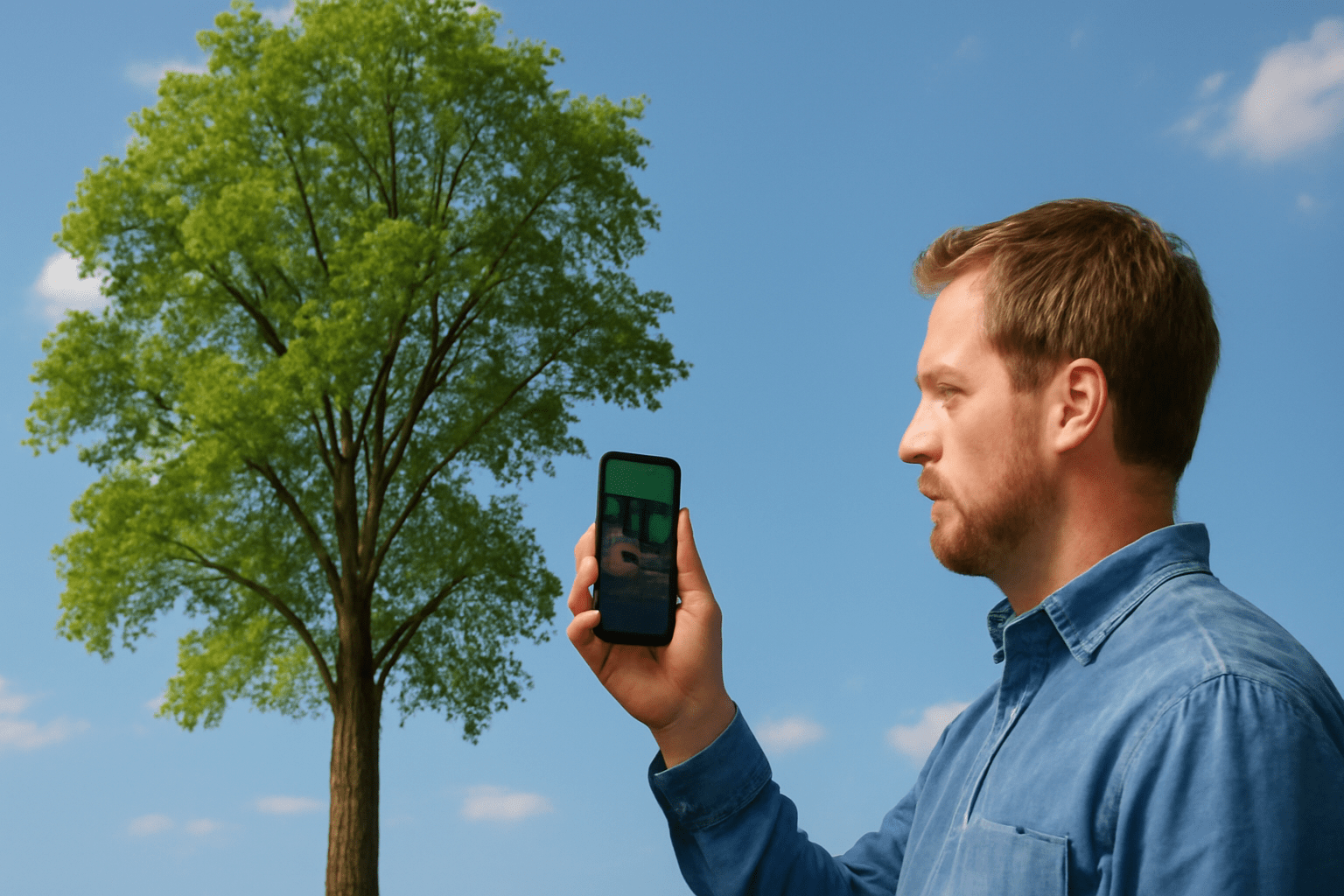
Why it matters: The taller your tree, the more timber it can yield, which boosts its value. 🌲
🍃 3. Evaluating the Health of the Tree 🍃
Before you get too excited about selling your tree, take a close look at its health. The value of your tree will drop if it has visible issues that impact the wood quality. 💔
- Check for diseases or pests: Look for discoloration, fungal growth, or bark damage—all signs of potential health problems. 🦠
- Inspect for defects: Check for knots, twisted wood, or broken branches that could lower the wood’s value. 🪚
- Signs of rot: Rotten wood reduces the quality of the timber and decreases its market price. 🪵
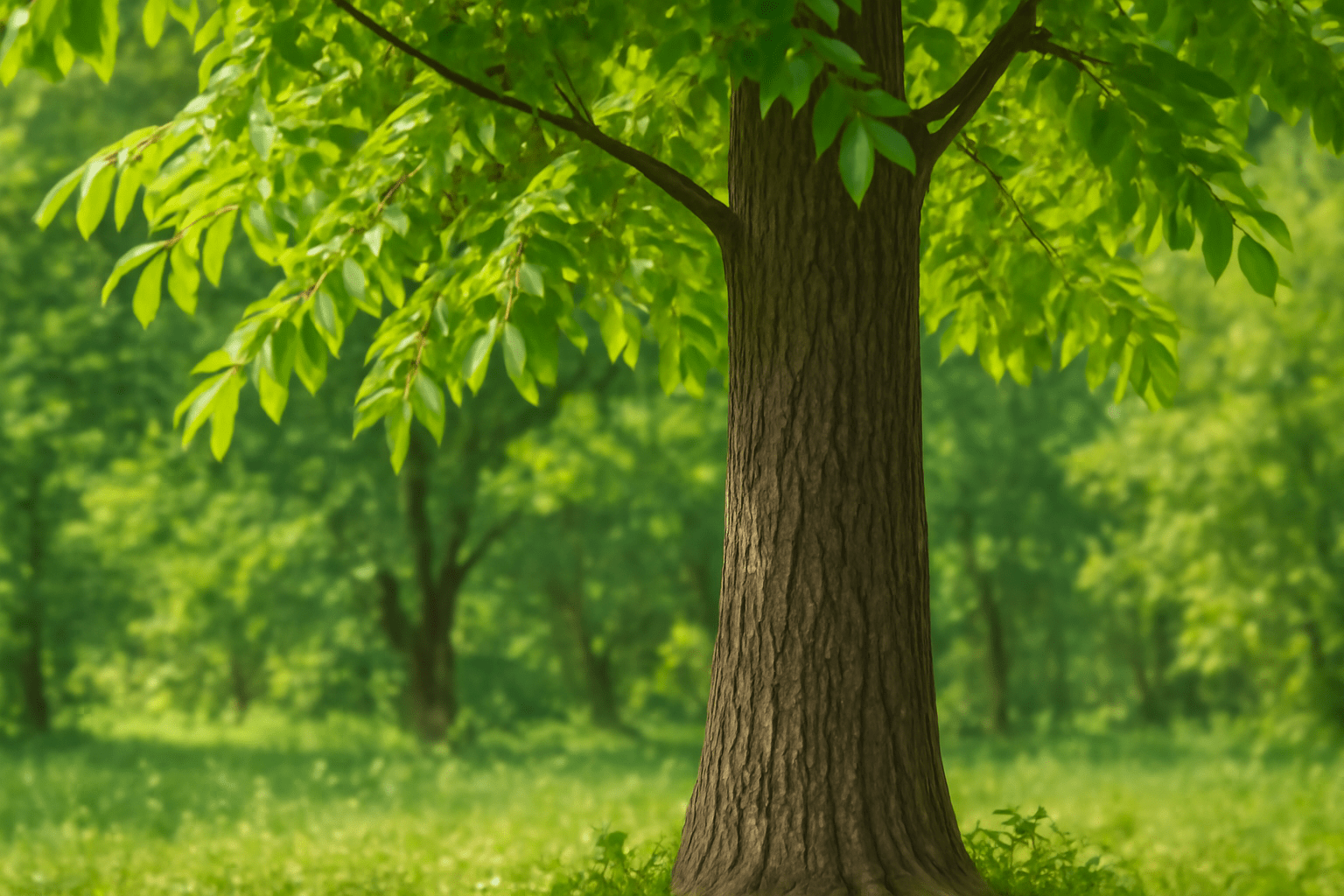
Tip: If you’re unsure about your tree’s health, consider consulting a professional arborist for a detailed assessment. 🌱
🔍 4. Assessing the Tree’s Overall Quality 🔍
The quality of your black walnut tree’s wood is just as important as its size. Here’s how you can evaluate the wood quality before selling it: 🪓
- Look for straight trunks: A straight trunk without many branches makes the best quality timber. 🪚
- Check the wood color: Black walnut wood is typically dark brown or purplish, but wood that is too light or uneven in color may be less valuable. 🌰
- Examine the grain: A straight, tight grain is preferred. Irregular or twisted grain can lower the wood’s value. 🪶
🌟 Summary of Key Points 🌟
To assess the value of your black walnut tree, you’ll need to measure the diameter at breast height (DBH), estimate the tree’s height, check its health, and evaluate the quality of its wood. These steps will give you a solid foundation for determining your tree’s worth and help you decide whether it’s time to sell. 🌳💵
💰 Calculating the Value of a Black Walnut Tree 💰
Now that you’ve measured and assessed your black walnut tree, it’s time to calculate its value. Determining the value of your tree isn’t an exact science, but with the right approach, you can get a good estimate. This section will guide you through the methods to calculate your tree’s worth, whether you’re using pricing guides, consulting professionals, or considering market conditions. Let’s dive in! 🌳💵
📚 1. Using a Timber Price Guide 📚
One of the most common ways to estimate the value of your black walnut tree is by consulting a timber price guide. These guides provide average prices per board foot (a standard measurement for lumber), which is key to determining the value of your tree. 📏
- What is a board foot? It’s a unit of measurement for wood volume. One board foot equals 12 inches by 12 inches by 1 inch of wood. 📐
How to use a timber price guide:
- Find a reliable guide, like TimberMart-South or local state-based guides. 📖
- Look up the current price for black walnut lumber, which will vary depending on size and quality. 💲
- Use your tree’s DBH and height to estimate the total board feet the tree can yield (there are online calculators for this!). 🌐
- Multiply the board feet by the price per board foot listed in the guide. 🧮
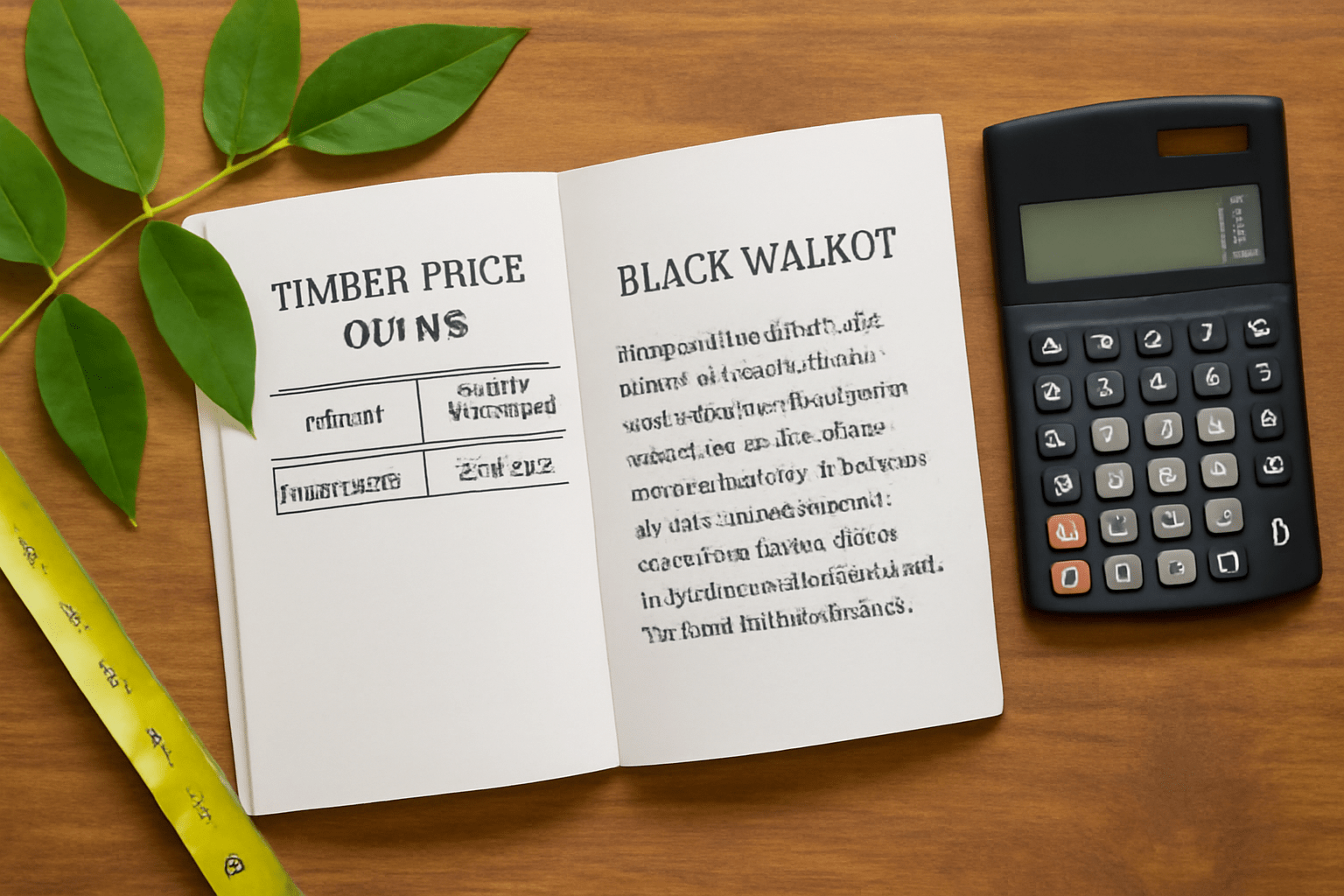
Tip: Prices for black walnut wood can range from $2 to $10 per board foot, depending on quality, location, and market demand. 🌍
💼 2. Consulting a Professional Timber Buyer 💼
If you want a more precise valuation, consulting a professional timber buyer is a great option. Timber buyers have experience and access to up-to-date market trends, and they can give you a detailed estimate of your tree’s worth. 🧑💼
- What do timber buyers do? They assess the size, quality, and location of your tree, and provide you with a fair offer based on the current market. 📊
- Why it’s valuable: Professional buyers will consider additional factors like transportation costs, local demand, and whether the tree is easy to harvest. 🚛
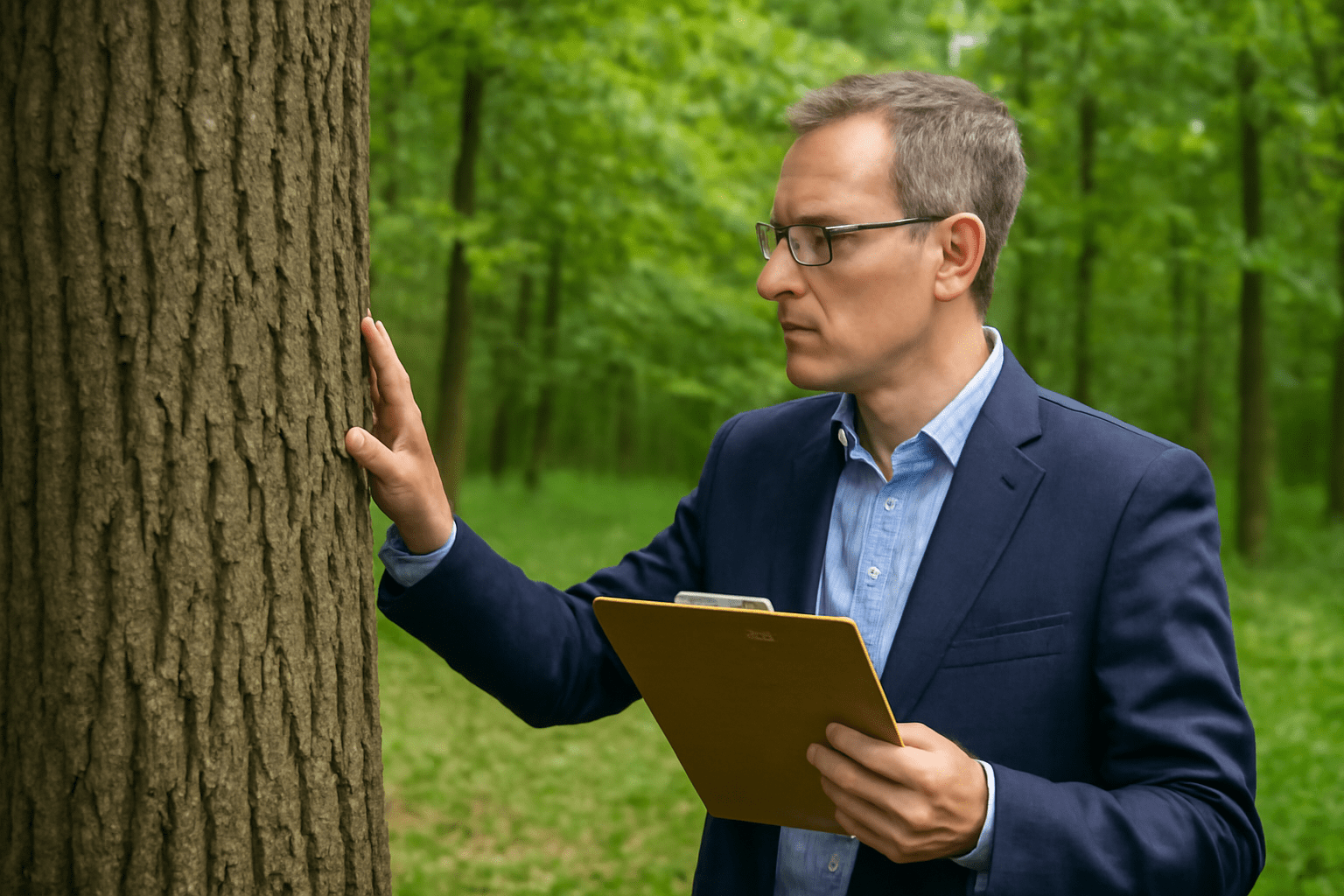
Tip: It’s always a good idea to get multiple quotes from different buyers to ensure you get the best price for your tree. 📈
🌍 3. Considering Market Conditions 🌍
Market conditions play a significant role in the value of your black walnut tree. Prices can fluctuate due to factors like supply and demand, economic conditions, and regional interest. 📉📈
- Supply and demand: If there’s a high demand for walnut wood in your area, your tree’s value might increase. 🌳
- Economic factors: During times of economic growth, timber prices may rise, while during a recession, prices might drop. 📉
- Regional variations: Some areas have higher demand for black walnut trees than others. If walnut trees are rare in your area, you could potentially get a higher price. 🌍
Tip: Keep an eye on local timber markets and seasonal trends to help you sell your tree at the right time. 📅
🔍 4. Calculating the Total Value 🔍
To calculate the total value of your black walnut tree, follow these steps: 🧮
- Measure the tree’s DBH and estimate the height. 📏
- Calculate the board feet using an online calculator or by using a standard formula based on DBH and height. 🖥️
- Look up the price per board foot in a timber price guide. 📚
- Multiply the board feet by the price per board foot to get an estimated value. 💰
For example, if your black walnut tree has 1,000 board feet of usable timber and the price per board foot is $6, the total value would be:
1,000 board feet x $6 per board foot = $6,000. 💵
🌟 Summary of Key Points 🌟
To calculate the value of your black walnut tree, you can use a timber price guide, consult a professional buyer, or consider current market conditions. By combining these methods, you’ll have a clearer idea of your tree’s worth and be ready to make an informed decision on whether to sell. 💰🌳
🌳 How to Sell or Harvest Your Black Walnut Tree 🌳
Once you’ve assessed your black walnut tree’s value, the next step is deciding how to sell or harvest it. Whether you’re a property owner looking to make a profit or someone wanting to manage your land more efficiently, selling your tree at the right time and under the right conditions can make a huge difference. This section will guide you through the process and help you maximize your tree’s value. Let’s get started! 💸
🕒 1. Choosing the Right Time to Sell 🕒
Timing is crucial when it comes to selling your black walnut tree. The right moment can increase its value, while the wrong timing may lower the price. Here’s what you need to consider: ⏰
- Best time to sell: Ideally, you want to sell when the market demand is high. This is often in the spring or early summer when lumber mills are in full operation. 🌞
- Tree maturity: Trees that are mature (typically 40-80 years old) will yield the most value. If your tree is just starting to mature, it may be worth waiting for a few more years. 🌳
- Post-harvest condition: Make sure the tree is healthy and free from any disease or pest damage before selling. Harvesting during the tree’s dormant season (late fall or winter) can help preserve the wood quality. ❄️
Tip: Check local timber markets and get updates on seasonal trends to help you determine the best time to sell. 📆
🌲 2. Steps to Harvest Black Walnut Trees 🌲
Harvesting a black walnut tree is a big decision and should be done carefully to avoid damage to the surrounding environment and maximize the tree’s value. Here’s how to go about it: 🪚
- Hire a professional logger: It’s essential to hire a certified and experienced logger who can safely cut and transport the tree. They’ll know how to handle the tree with minimal damage to the surrounding land. 🚜
- DIY approach: If you decide to do it yourself, make sure you have the proper tools and safety equipment. Keep in mind that harvesting large trees can be difficult and dangerous. ⚠️
- Protect the land: During harvest, make sure to avoid damaging nearby trees or the soil. A professional will also help prevent unnecessary harm to your property. 🌿
Tip: Always check with your local government for any permits or regulations related to tree cutting. 🌍
🏡 3. Legal and Environmental Considerations 🏡
Before you start cutting down your black walnut tree, it’s important to be aware of any legal or environmental rules in your area. 📝
- Permits: In some regions, you may need a permit to harvest a tree, especially if it’s on public land or a protected area. 📜
- Environmental concerns: Ensure that the tree cutting won’t negatively impact the local ecosystem. Some areas may have guidelines for sustainable harvesting practices. 🌍
- Local ordinances: Double-check any local ordinances related to tree cutting, as some municipalities have restrictions on cutting certain species or require you to replant. 🏙️
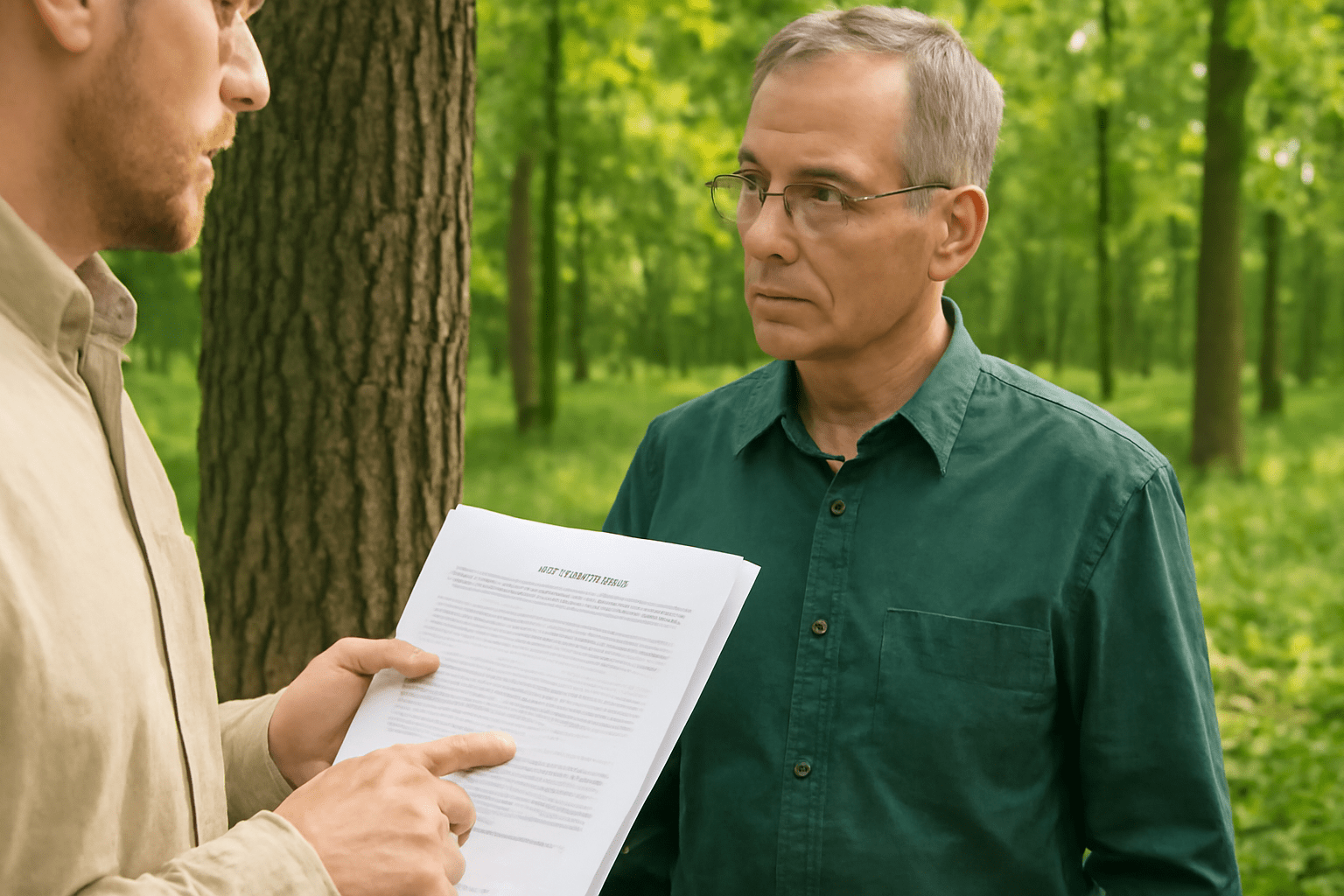
Tip: Consulting a local forestry expert or government agency will help you navigate these legal and environmental factors. 🧑💼
💼 4. Maximizing Profits from Your Black Walnut Tree 💼
If you want to get the best price for your black walnut tree, follow these tips to make sure you’re maximizing its value: 💰
- Prepare the tree for sale: Clean up any small branches and debris around the tree. The less work the buyer has to do, the better your price will be. 🧹
- Negotiate with buyers: Don’t just accept the first offer. Negotiate to ensure you’re getting a fair price for your tree. If you have multiple offers, use them to your advantage. 💬
- Consider selling to multiple buyers: Sometimes selling to a timber broker can give you a better return, as they have wider access to buyers who may be willing to pay a premium for high-quality walnut wood. 📈

Tip: A well-prepared and well-negotiated sale can increase the value of your tree significantly. 💵
🌟 Summary of Key Points 🌟
Selling or harvesting your black walnut tree can be a rewarding process, but it’s important to do it at the right time, with the right methods, and by following legal and environmental guidelines. By hiring professionals, preparing the tree properly, and negotiating effectively, you can maximize your profits and ensure a smooth harvest. 🌳💰
🌟 Final Thoughts 🌟
Determining the value of a black walnut tree can be a rewarding and insightful process for property owners and tree enthusiasts alike. By understanding the key factors that affect its value—such as size, quality, location, and health—you’re now equipped to assess your tree accurately. 📏🌳 Measuring the tree’s DBH, estimating its height, and evaluating its wood quality will give you a strong foundation for making informed decisions. 📊
Whether you’re planning to sell your tree or simply want to know its worth, remember that timing, professional consultation, and proper preparation are essential to getting the best value. 🌳💰
If you follow the steps in this guide—use timber price guides, consult buyers, and consider market conditions—you’ll be able to confidently calculate the value of your black walnut tree and sell it for a fair price. 📝💵 Don’t forget to stay on top of local laws and environmental considerations to ensure a smooth and legal harvest! 🌍
By taking the time to assess and understand your tree’s value, you’re setting yourself up for success, whether you’re looking to profit from it or simply manage your land more efficiently. 🌱
Good luck, and we hope this guide helps you make the most out of your black walnut tree! 😊🌳
Frequently Asked Questions (FAQ)
What factors determine the value of a black walnut tree?
The value of a black walnut tree is primarily determined by its size (diameter and height), the quality of its wood, and its overall health. Trees with fewer defects, straight trunks, and dark, uniform wood tend to be more valuable. Location and market demand also play a role in pricing.
How do I measure the diameter of my black walnut tree?
To measure the diameter, use a tape measure to wrap around the tree at 4.5 feet above the ground, which is the standard for measuring Diameter at Breast Height (DBH). This measurement will help estimate how much usable timber your tree provides.
What is DBH, and why is it important for tree valuation?
DBH stands for Diameter at Breast Height and is measured at 4.5 feet above the ground. It’s crucial because it gives a standardized way to assess a tree’s size, which directly impacts its timber value. Larger trees typically yield more wood and are worth more.
How can I estimate the height of my black walnut tree?
To estimate your tree’s height, you can use a clinometer or a smartphone app, or you can use the shadow method by comparing the tree’s shadow with the length of a stick of known height. Taller trees generally have more timber, increasing their value.
When is the best time to sell my black walnut tree?
The best time to sell is when the market demand is high, typically in the spring or early summer. Trees should also be fully mature, and it’s best to sell when the tree is healthy, without signs of disease or damage, to ensure maximum value.
How much is my black walnut tree worth?
The value can range from $1,000 to $15,000+ depending on factors like tree size, wood quality, and market conditions. On average, black walnut wood can fetch $2 to $10 per board foot. A larger tree with high-quality wood will naturally be more valuable.
Should I hire a professional to assess my tree’s value?
Yes, hiring a professional timber buyer or arborist can help you get an accurate valuation. They can evaluate the tree’s health, size, and quality, and provide a fair estimate based on current market trends. This also saves you time and ensures you don’t miss out on potential value.
What should I do before harvesting or selling my black walnut tree?
Before selling or harvesting, make sure the tree is healthy, clear of pests, and free from major defects. Hire a certified logger to safely cut the tree and avoid environmental damage. Also, ensure you’re following any local regulations or required permits for tree cutting.
